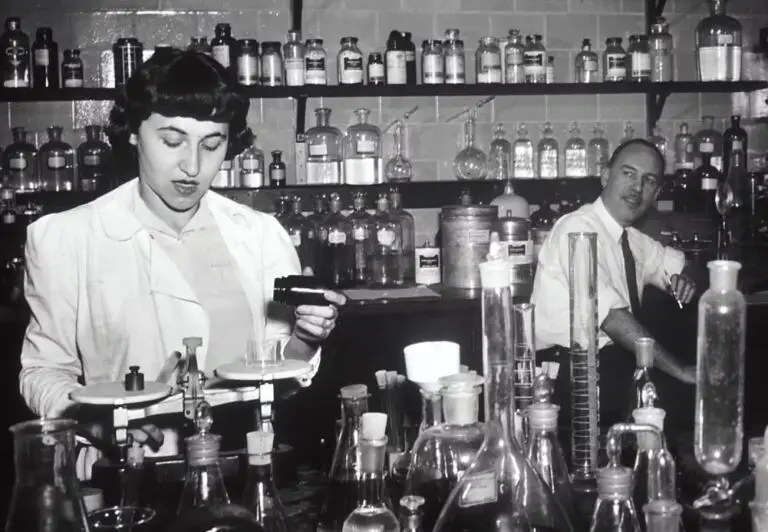Does Beer Have Histamines?
What are histamines? Does beer have histamines? Let’s see!
Yes, beer can contain histamines. Histamines are naturally occurring compounds that can be present in various fermented products, including beer. During the brewing process, histamines can be produced by yeast and bacteria involved in fermentation.
The levels of histamines in beer can vary depending on factors such as the brewing method, ingredients used, and the specific type of beer.
Follow us on Instagram!
While not everyone is sensitive to histamines, individuals with histamine intolerance or allergies may experience reactions after consuming histamine-rich foods and drinks, including certain beers.

How Much Histamines Are In Beer?
Quantifying the exact amount of histamines in beer can be challenging, as it depends on various factors including the brewing process, ingredients, and fermentation conditions. Generally, histamine levels in beer are relatively low compared to some other fermented products:
Most beers have about 21-305 micrograms of histamines per liter.
Certain types of beer may have higher histamine content than others. Here’s a general overview:
Lager: Lagers, especially those brewed using traditional methods with longer fermentation periods and lower temperatures, tend to have lower histamine levels. (20 to 80 micrograms per liter)
Ale: Ales, being fermented at warmer temperatures, might have slightly higher histamine content compared to lagers (50 to 100 micrograms per liter). Craft and specialty ales may vary.
Stout and Porter: These darker beers may have slightly elevated histamine levels due to the use of roasted grains and longer fermentation times. (typically above 100 micrograms per liter)
Wheat Beer: Beers brewed with a significant proportion of wheat might have varying histamine levels, with some wheat beers potentially containing more histamines. (more than 100 micrograms per liter)
Sour Beers: Beers with intentional souring, such as lambics or certain fruit-infused varieties, may have higher histamine levels due to extended fermentation periods and specific bacterial strains. (above 150 micrograms per liter)

How Much Histamines Are In Other Beverages?
Other beverages also contain histamines:
- 3-120 micrograms/l in white wines
- 15-670 micrograms/l in champagnes;
- 60-3800 micrograms/l in red wines;
- spirits, like vodka, tequila, and gin have minimal amounts of histamines
What Are Histamines?
Histamines are biogenic amines, which are naturally occurring compounds involved in various physiological processes within the body. They serve as signaling molecules and are associated with immune responses, neurotransmission, and regulation of stomach acid.
Roles of Histamines:
Immune Response: Histamines play a crucial role in the body’s immune response. When the immune system detects a potential threat, such as an allergen, mast cells and basophils release histamines, triggering inflammation and other immune reactions to help protect the body.
Neurotransmission: In the central nervous system, histamines act as neurotransmitters, participating in the regulation of wakefulness, appetite, and attention.
Stomach Acid Regulation: Histamines stimulate the production of stomach acid (gastric acid), aiding in the digestion of food.
Common Sources of Histamines:
- Fermented Foods and Beverages: Histamines are naturally produced during the fermentation process. Common sources include beer, wine, and fermented dairy products.
- Certain Fruits and Vegetables: Some fruits and vegetables, especially those undergoing fermentation or spoilage, may contain higher levels of histamines. Examples include tomatoes, eggplants, and strawberries.
- Seafood: Certain types of fish, particularly those that are aged, smoked, or canned, can have elevated histamine levels. Tuna, mackerel, and sardines are examples.
- Processed Meats: Deli meats, sausages, and other processed meats can contain histamines, especially if they have undergone fermentation or aging processes.
- Cheese: Aged cheeses, such as cheddar, parmesan, and gouda, tend to have higher histamine levels compared to fresh cheeses.
- Alcoholic Beverages: In addition to beer and wine, other alcoholic beverages like whiskey and champagne can contain histamines.
Individual tolerance to histamines varies, and while many people can consume histamine-containing foods without issue, others may experience sensitivity or allergies.

Histamines In The Brewing Process
In the brewing process, histamines can be generated from various sources, and understanding these potential contributors is essential for those concerned about histamine intake. Here are some key potential sources of histamines in brewing:
- Yeast and Microbial Activity: During fermentation, yeast and other microorganisms naturally produce histamines as byproducts. The type of yeast used and the fermentation conditions can influence the amount of histamines produced.
- Fermentation Duration and Temperature: Longer fermentation periods and higher fermentation temperatures can contribute to increased histamine levels in beer. Some styles of beer, especially those with extended fermentation times, may have higher histamine content.
- Ingredients Used: Certain ingredients in beer, such as malted barley and hops, may contain trace amounts of histamines. The quality and origin of these ingredients can impact histamine levels in the final product.
- Additives and Adjuncts: Additional additives or adjuncts used in brewing, such as fruit additions or spices, may introduce histamines. The fermentation of these added components can contribute to histamine production.
- Barrel Aging: Beers that undergo barrel aging, particularly in wooden barrels, may absorb histamines from the wood. The length of time spent in barrels can influence the histamine content.
- Contamination: Unintended microbial contamination during the brewing process can lead to increased histamine levels. Proper sanitation and quality control measures are crucial in preventing contamination.
- Bacterial Strains: Specific bacterial strains involved in the brewing process can influence histamine production. Beers that intentionally incorporate certain bacteria for souring may have higher histamine levels.

Histamine Sensitivity – What Should You Know?
Understanding Histamine Sensitivity
Histamine sensitivity, also known as histamine intolerance, refers to the body’s inability to break down and eliminate histamine efficiently. This condition can result in an accumulation of histamines, leading to various symptoms such as headaches, hives, digestive issues, and nasal congestion.
While histamine sensitivity is distinct from a true allergy, the symptoms can mimic allergic reactions, making it important for individuals to recognize and manage their sensitivity to histamines.

Connection between Histamine-Rich Foods/Drinks and Allergic Reactions
Consuming histamine-rich foods and drinks, including certain types of beer, can exacerbate symptoms in individuals with histamine sensitivity. The histamines present in these products can overwhelm the body’s capacity to metabolize them, leading to an allergic-like response.
It’s crucial for individuals with histamine sensitivity to be aware of potential sources of histamines in their diet, including alcoholic beverages, and to monitor their reactions to identify specific triggers.
Identifying Individuals at Risk
Certain factors may increase the risk of histamine sensitivity, including genetic predisposition, impaired enzyme function responsible for histamine breakdown (diamine oxidase deficiency), and underlying health conditions.
Individuals with conditions such as irritable bowel syndrome (IBS), inflammatory bowel disease (IBD), or certain allergies may also be more prone to histamine sensitivity.
Wrapping It Up
In conclusion, while beer can indeed contain histamines (like other alcoholic beverages), it’s essential to approach this information with context. Histamine levels vary across beer types, and personal tolerance differs among individuals. Being mindful of your own body’s signals and choosing beers that align with your health considerations is a key takeaway.

I am a young architect with a passion that goes beyond blueprints… it’s beer! undertherosebrewing.com is more than just a blog, it’s a manifestation of my lifelong dream to explore, read, and learn everything about beer. Join the blog on this unfiltered and genuine adventure into the heart of beer culture. Cheers!






